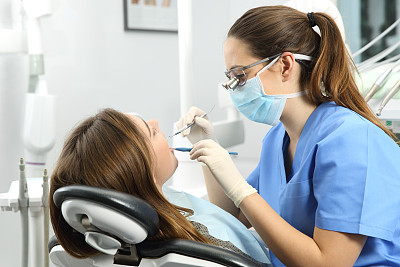The Essential Guide to Managing Pain and Recovery After Extracting a Tooth for Optimal Oral Health
Summary: Extracting a tooth can be a daunting experience, often accompanied by pain and anxiety. This guide focuses on essential strategies for managing pain and ensuring a smooth recovery for optimal oral health. It covers pre-operative preparations, methods to alleviate pain post-extraction, dietary considerations, and the importance of follow-up care. By understanding these aspects, patients can promote healing and maintain overall oral hygiene, ensuring a speedy return to their daily routines.
1. Pre-Operative Preparations for Tooth Extraction

The journey to a successful tooth extraction begins long before the procedure itself. Patients should have a thorough consultation with their dental professional to discuss any medical conditions or medications that might affect recovery. This dialogue is crucial as it helps clinicians tailor the extraction process to fit individual needs.
Another important aspect of pre-operative preparation is adherence to pre-extraction instructions. These may include dietary modifications, avoiding certain medications like blood thinners, and establishing a plan for post-operative care. By following these guidelines, patients can reduce complications and aid in a smoother recovery.
Lastly, mental preparation is equally important. Understanding the procedure, anticipating potential discomfort, and knowing what to expect afterward can significantly reduce anxiety. Anxiety management techniques, such as deep breathing, visualization, or asking the dentist questions, can all be helpful.
2. Effective Pain Management After Extraction
Once a tooth has been extracted, managing pain becomes a top priority. Over-the-counter pain medications such as ibuprofen and acetaminophen can help alleviate discomfort effectively. Patients must follow dosage instructions carefully to avoid any potential side effects.
In addition to medication, applying cold compresses to the outer cheek can significantly reduce swelling and pain. Ice packs should be used intermittently to provide the best relief. This method is typically recommended for the first 24 hours post-extraction.
Implementing relaxation techniques can also aid in pain management. Techniques such as gentle yoga, meditation, or even listening to soothing music can help divert attention from pain and promote overall relaxation. It is essential to find what works best for each individual.
3. Dietary Considerations for Post-Extraction Recovery
Diet plays a crucial role in recovery after a tooth extraction. Patients are encouraged to stick to a soft and nutritious diet in the days following the procedure. Foods such as yogurt, mashed potatoes, and smoothies are not only easy to consume but also provide essential nutrients for healing.
It is equally important to avoid certain food types to prevent complications. Hard, crunchy, or excessively hot foods can irritate the extraction site or dislodge blood clots, leading to painful conditions like dry socket. Sticking to cool or room-temperature foods can also ease discomfort.
Hydration is another vital aspect of dietary consideration. Patients should drink plenty of fluids but should avoid straws, as the suction can negatively impact the healing process. Consuming nourishing soups can be a tasty way to stay hydrated while promoting recovery.
4. Importance of Follow-Up Care and Oral Hygiene
Post-operative follow-up is critical to ensure that healing is proceeding as expected. Patients should schedule a follow-up appointment within a week after the extraction to allow for professional monitoring of the healing process. This appointment can identify any potential complications early.
Maintaining proper oral hygiene during the recovery phase is crucial, yet it needs to be done carefully. Brushing the teeth gently but avoiding the extraction site is vital to prevent any irritation. Rinsing with salt water can help keep the mouth clean and may reduce the risk of infection.
Finally, being mindful of any unusual symptoms is key. If patients experience excessive bleeding, severe pain, or swelling that doesnt improve within a few days, it’s essential to contact a dental professional immediately. Prompt attention can mitigate complications.
Summary: Effective management of pain and recovery after tooth extraction is critical for maintaining optimal oral health. Awareness of pre-operative approaches, post-extraction pain management strategies, dietary care, and the significance of follow-up treatments can help facilitate a smoother recovery. By implementing these practices, patients not only foster healing but also promote continued oral health.
This article is compiled by Vickong Dental and the content is for reference only.



